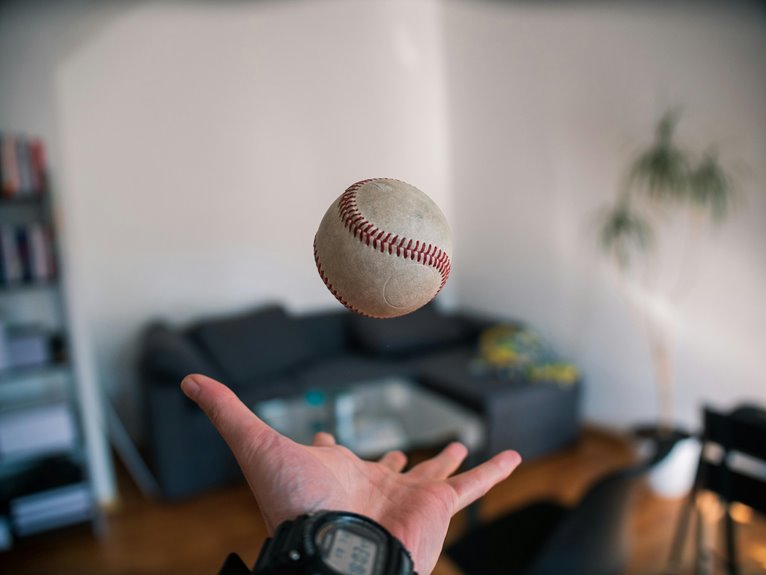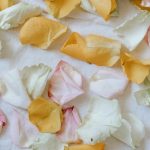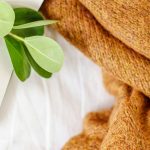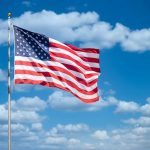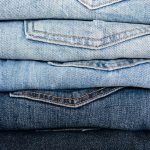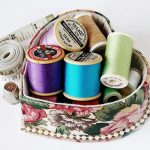You can spot the right side of Kona cotton by its smooth texture, vibrant colors, and subtle sheen, while the wrong side feels rougher and shows duller hues. The weave on the front is tighter and more uniform, with clearer, sharper prints compared to the fuzzier, less saturated back. Light also reflects more on the right side. If you want to avoid common mistakes and handle your fabric like a pro, keep exploring these helpful tips.
Table of Contents
Key Takeaways
- The right side of Kona cotton shows vibrant, saturated colors and sharp print details, while the wrong side appears duller with blurry patterns.
- The right side has a smoother, tighter weave and a subtle sheen, whereas the wrong side feels rougher and often shows fuzziness.
- Light reflection is more pronounced on the right side, giving it a slight sheen compared to the matte appearance of the wrong side.
- Close inspection reveals more uniform thread alignment on the right side, with the wrong side displaying minor weaving inconsistencies.
- Washing and ironing fabric before cutting help maintain texture clarity, making it easier to distinguish the correct side for sewing projects.
Understanding the Weave of Kona Cotton
Although it might seem subtle at first, the weave of Kona cotton plays an essential role in its durability and feel.
When you examine Kona cotton, you’ll notice it’s tightly woven, which gives it strength and a smooth texture. This close weave means the fabric resists wear and tear better than looser weaves.
You’ll also find that the threads run evenly in both directions, providing consistent quality and a balanced hand. Because of this, Kona cotton feels soft yet sturdy, making it ideal for quilting and apparel.
When you handle it, pay attention to this uniform weave—it’s what sets Kona cotton apart from other cotton fabrics. Understanding this helps you appreciate its quality without needing to see the fabric’s printed side.
Visual Differences Between the Right and Wrong Side
When you look closely at Kona cotton, you’ll notice the right side often shows more vibrant colors and a smoother finish.
The texture on the wrong side tends to be duller and rougher, with prints appearing less clear.
Paying attention to these differences helps you quickly identify which side is which.
Color Vibrancy Comparison
Since Kona cotton fabric is prized for its rich hues, you’ll notice that the right side displays more vibrant and intense colors compared to the wrong side.
When you hold the fabric up to the light or view it closely, the right side’s colors pop with clarity and depth. The wrong side, in contrast, appears duller and less saturated, often showing muted or slightly faded tones.
This difference occurs because the dye saturates the fibers more fully on the right side during manufacturing. If you’re unsure which side you’re looking at, focus on the color intensity—brighter and sharper hues indicate the right side.
This visual cue helps you orient your fabric correctly for quilting, sewing, or other projects requiring precise color presentation.
Texture and Finish Variations
Beyond color vibrancy, you’ll also notice distinct differences in texture and finish between the right and wrong sides of Kona cotton fabric.
The right side feels smoother and softer to the touch, offering a polished finish that highlights the fabric’s quality. When you run your fingers over it, you’ll detect a tightly woven surface with a slight sheen.
In contrast, the wrong side tends to be rougher and less uniform, often displaying subtle weaving inconsistencies or faint imperfections. It lacks the refined finish and can feel a bit stiffer or more matte.
Print Clarity Differences
How can you tell the right side of Kona cotton fabric just by looking? The print clarity difference is your best clue. On the right side, colors are vivid, and patterns are sharp, showing every detail. Flip it to the wrong side, and you’ll notice the design looks faded or blurry, almost like a shadow of the front.
Here’s a quick comparison:
| Right Side | Wrong Side |
|---|---|
| Bright, crisp colors | Muted, dull colors |
| Clear, well-defined patterns | Blurred or faded patterns |
| Vibrant, eye-catching design | Washed-out, less distinct |
Texture Variations to Look For
Although Kona cotton is known for its smooth feel, you’ll notice subtle texture variations that help you identify its authenticity.
When you run your fingers over the fabric, the right side usually feels slightly softer and more refined. The weave appears tighter and more uniform, giving it a polished surface.
In contrast, the wrong side may feel a bit rougher or uneven, with tiny irregularities in the weave. You might also detect faint ridges or a slight fuzziness on the wrong side, which don’t appear on the right.
Paying attention to these tactile differences can guide you in distinguishing the correct side, especially when the visual cues are minimal.
Trust your sense of touch—it’s a reliable tool for telling the sides apart.
Color Intensity and Print Clarity Cues
You’ll notice that Kona cotton often showcases richer color vibrancy compared to other fabrics.
Pay close attention to how sharp and clear the printed details appear on the fabric’s surface.
These visual cues can help you spot authentic Kona cotton with ease.
Color Vibrancy Differences
When comparing Kona cotton fabric to other materials, you’ll notice that its color vibrancy stands out through both intensity and print clarity.
The right side of Kona cotton typically displays richer, more saturated colors, making patterns pop vividly. This is because the dye penetrates fully, enhancing the fabric’s natural brightness.
On the wrong side, colors often appear duller or washed out, lacking the same depth and glow. While both sides might show the design, the vibrancy difference helps you quickly identify which side faces outward.
Pay close attention to how bold and lively the colors seem; the livelier side is almost always the right side. This visual cue makes it easier to select and use Kona cotton correctly in your sewing projects.
Sharpness of Printed Details
Anyone examining Kona cotton fabric closely will notice the sharpness of printed details sets it apart. When you look at the right side, you’ll see crisp, well-defined edges in the patterns and motifs. The colors appear solid and clean, without any blurring or bleeding.
On the wrong side, the print details become fuzzier and less distinct, often showing slight color bleeding where ink has seeped through the weave. This loss of clarity signals you’re looking at the back.
Paying attention to how sharply the design is rendered helps you quickly identify the fabric’s correct side. So, when handling Kona cotton, trust the print clarity and color intensity cues—they’re your best guide to spotting the right side instantly.
Using Light to Detect Fabric Sides
Although Kona cotton fabric looks similar on both sides, shining a light through it can reveal subtle differences that help you identify the right side.
Hold the fabric up to a bright light source or use a lightbox if you have one. You’ll notice the weave on the wrong side appears slightly more transparent and uneven, while the right side looks more consistent and dense.
The colors often seem richer and more vibrant when backlit on the right side. Pay attention to any printed patterns; they tend to look sharper and less faded when viewed this way on the correct side.
Using light like this is a quick, effective method to distinguish fabric sides without relying solely on touch or texture.
Practical Tips for Handling Kona Cotton
Since Kona cotton is a tightly woven fabric with a smooth finish, handling it carefully helps maintain its quality and appearance.
Kona cotton’s tight weave and smooth finish require gentle handling to preserve its quality and look.
When you work with Kona cotton, always wash and iron it before cutting to prevent distortion. Use sharp scissors or a rotary cutter to achieve clean edges, which prevents fraying.
Avoid stretching the fabric while sewing; instead, let the feed dogs guide it smoothly. When pinning, place pins perpendicular to the edge to keep the fabric flat without causing puckering.
Store your Kona cotton flat or rolled to avoid creases that can be hard to remove. Finally, keep your hands clean and dry to prevent transferring oils or dirt onto the fabric, preserving its pristine look.
These simple steps help you get the best results with your Kona cotton projects.
Common Mistakes When Identifying Fabric Sides
When you’re identifying the sides of Kona cotton fabric, overlooking subtle differences can lead to mistakes that affect your project’s finish. One common error is assuming both sides look identical and skipping a close inspection.
Another mistake is confusing the slight sheen on the right side with a stain or discoloration. Finally, relying solely on the printed selvage or manufacturer markings without checking the texture can mislead you.
To avoid these pitfalls, keep an eye out for:
- The right side’s smoother, more vibrant appearance compared to the duller wrong side
- Slight differences in weave tightness and fiber alignment
- The way light reflects differently on each side, revealing the correct orientation
Frequently Asked Questions
Can Kona Cotton Fabric Be Used for Quilting and Apparel?
Imagine painting with colors that stay vibrant wash after wash—that’s Kona cotton for quilting and apparel. You’ll love its softness and durability, making it perfect for cozy quilts and stylish, comfortable clothes you’ll wear often.
How Should Kona Cotton Be Washed and Cared For?
You should wash Kona cotton in cold water on a gentle cycle to prevent shrinking. Use mild detergent, avoid bleach, and tumble dry low or air dry. Iron on medium heat if necessary to keep it crisp.
Is Kona Cotton Fabric Suitable for Beginners in Sewing?
Yes, Kona cotton is perfect for beginners. You’ll find it easy to cut, sew, and press, thanks to its smooth texture and stable weave. It handles well, making your sewing projects more enjoyable and successful.
Where Is Kona Cotton Fabric Typically Manufactured?
Back in the days of telegrams, you’d find Kona cotton fabric mainly made in the USA, especially Hawaii. Today, you’ll often see it produced in the US and other countries, ensuring quality and vibrant colors.
What Is the Thread Count of Kona Cotton Fabric?
Kona cotton fabric typically has a thread count around 220 to 320, giving you a smooth, durable feel. This range guarantees your projects will be both comfortable and long-lasting, perfect for quilting or apparel.
- The Use of Nonwovens in Construction and Civil Engineering - July 11, 2025
- The Use of Nonwovens in Construction and Civil Engineering - July 11, 2025
- The Use of Nonwovens in Construction and Civil Engineering - July 11, 2025

